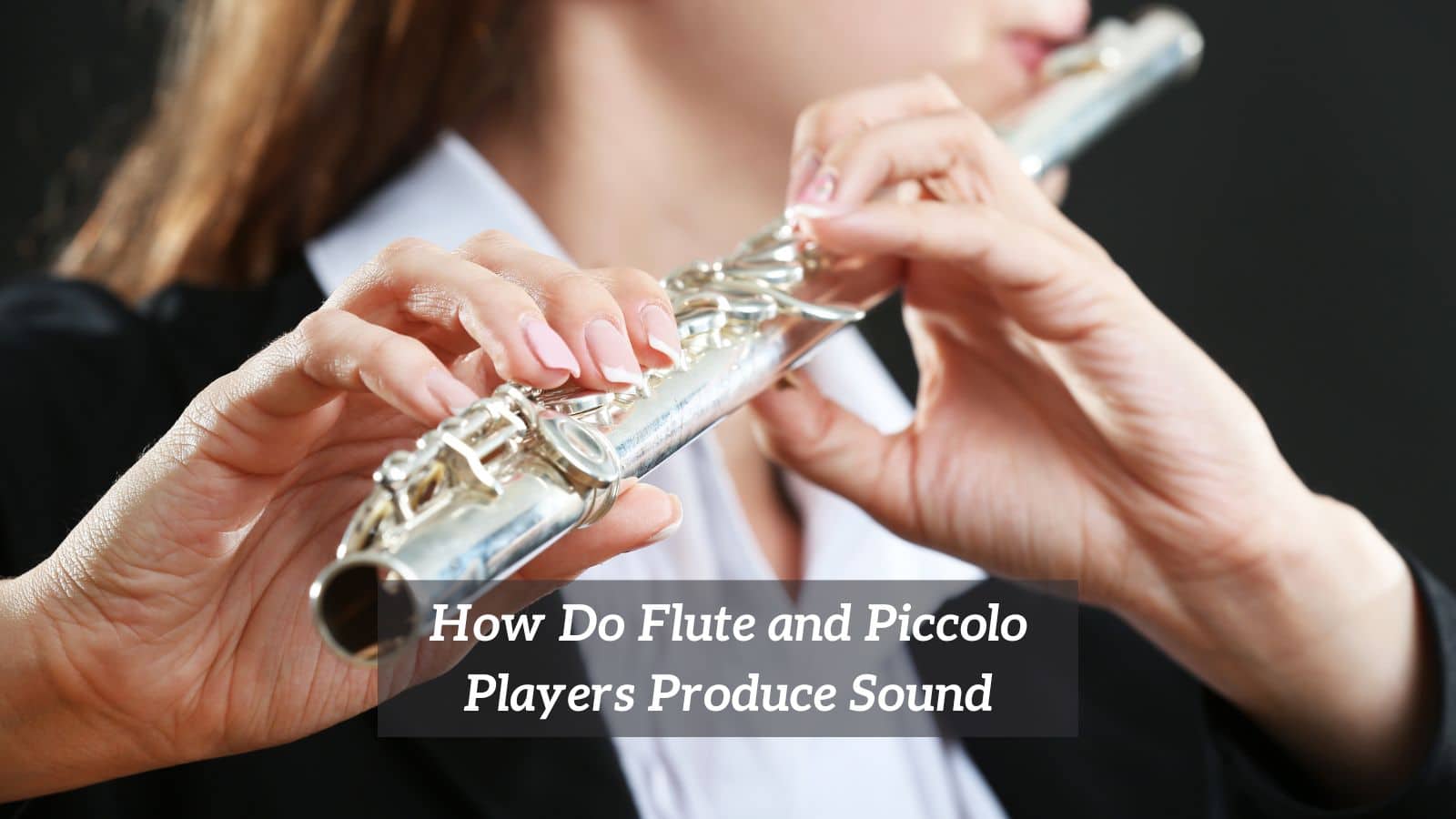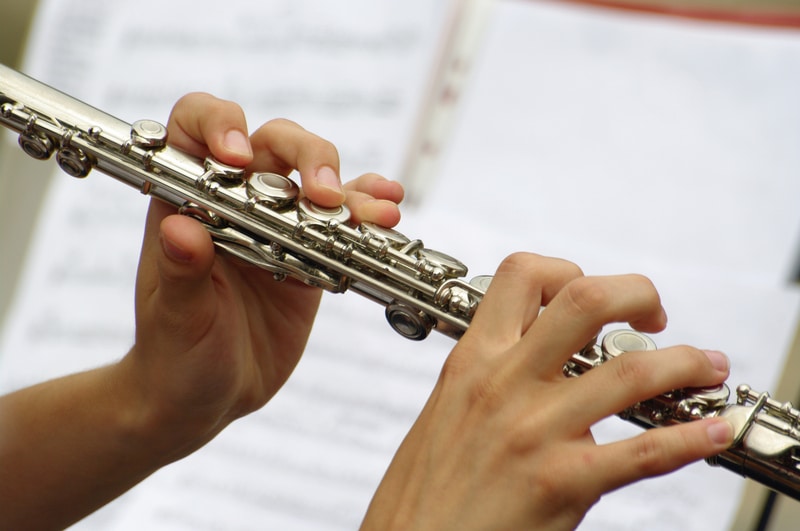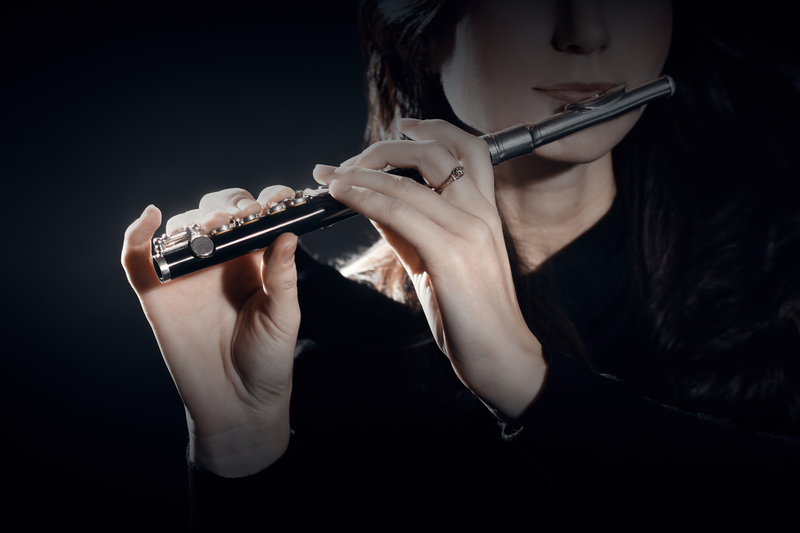
If you have ever tried to play the flute or the piccolo, you may have been discouraged or confused when it was difficult, or even impossible, to make a sound.
These instruments are challenging to learn to produce any sound at all on, let alone the clear, beautiful tone that professionals possess.
Unlike many other other wind instruments, there is no direct resistance from the instrument when producing a sound. So, how does sound production really work on the flute and piccolo?
How Do Flute and Piccolo Players Produce Sound
Flute and piccolo players produce sound by blowing air across the opening of the instrument, called the embouchure hole. The player creates a stream of air by blowing across the embouchure hole and shaping their lips in a specific way to create a tight seal.
The air stream then travels across the hole, creating vibrations in the column of air inside the flute or piccolo. These vibrations create sound waves that travel through the body of the instrument and out the open end.
The flute and piccolo are both classified as aerophones, which are instruments that produce sound through the vibration of air. The most common forms of flutes and piccolos today are transverse aerophones, meaning that the player blows across a hole that is perpendicular to the length of the instrument.
https://www.youtube.com/watch?v=7Kf-rlUZAaU
Now that we understand the physics of the instruments, how does it work in practice?
To produce sound on a flute or piccolo, the player must first form a proper embouchure. The embouchure is the shape of the lips and jaw that the player uses to blow into the instrument.
The player should shape their lips into a tight seal around the embouchure hole, while keeping their jaw relaxed. The player should also keep their tongue out of the way, so as not to block the air stream.
To create maximum sound and resonance, there should be as much space within the mouth as possible, yet the embouchure must remain securely formed.
Once the player has created a proper embouchure, they can begin to blow air into the instrument. The player should blow a steady stream of air across the embouchure hole, using their diaphragm and abdominal muscles to create a strong and consistent air flow.
As mentioned above, the vibrations in the column of air inside the flute or piccolo create sound waves that travel throughout the length of the instrument. Many people believe that the sound comes primarily out the end of the instrument.
https://www.youtube.com/watch?v=cdKa5Mwd3fU
However, in reality, a significant portion of the air that a flute or piccolo player blows will not go through the embouchure hole, instead being expelled across it. One of the reasons it is so hard to produce a full sound on the flute is that beginning players are not used to blowing enough air out to fill the instrument.
How do you play different notes?
To change the pitch of the sound on a flute or piccolo, the player must change the length of the column of air inside the instrument. On both flutes and piccolos, this is done by opening or closing the keys down the length of the instrument.
However, many intermediate to advanced level flutes are open-hole instruments, which means that not only should the keys be pressed down, the fingers must fully close the hole openings on those keys.
By opening or closing the holes and keys, the player can change the length of the column of air and create different pitches.
How else can the sound be manipulated?
In addition to the basic mechanics of sound production, there are other factors that can affect the sound of a flute or piccolo. For example, the player’s breath control, posture, and finger technique can all have an impact on the sound of the instrument.
The player’s breath control is critical, as it affects the strength and consistency of the air flow. A good posture also helps to support the diaphragm and allows for greater control over the air flow.
If a player relaxes their shoulders and stands tall, more resonance will be created in the chest area – similar to a singer. Finger technique is also important, as it affects the player’s ability to accurately open and close the holes or keys and create different pitches.
How are flutes and piccolos different?
One of the key differences between the flute and piccolo is their size. The piccolo is smaller than the flute and has a higher pitch. This is because the piccolo has a smaller embouchure hole and thus a shorter column of air, which creates higher frequency vibrations.
The flute, on the other hand, has a larger embouchure hole and a longer column of air, which creates lower frequency vibrations.
Because of this, the flute can accept more air than the piccolo. If a player were to blow the same amount of air they use to play the flute into the piccolo, the notes would begin to “crack” because the air speed and pressure is too much for the instrument.
A piccolo player will also have a smaller embouchure, because the air must be more narrowly directed to match the smaller embouchure hole.
In conclusion, flute and piccolo players produce sound by blowing air across the embouchure hole of the instrument. The player then creates a stream of air by forming a proper embouchure and blowing across the embouchure hole.
Some of the air will be expelled beyond the flute or piccolo, while much of it will enter inside the tube, creating vibrations in the column of air inside the instrument. These vibrations create the sound waves that we have come to understand as tone.
Then, by opening and closing different keys and adjusting posture, air speed, direction, and pressure, the player can create different pitches to produce music.
https://www.youtube.com/watch?v=3kfkoDUoG90
Despite the difficulties of these instruments, with the right technique and practice, flute and piccolo players can produce gorgeous and captivating sounds that can be enjoyed by audiences of all ages.


